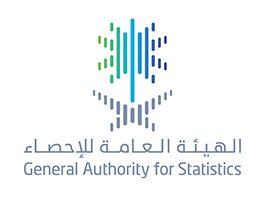
الهيئة العامة للإحصاء: ارتفاع الرقم القياسي لأسعار الجملة خلال شهر فبراير 2019م
GASTAT: Wholesale Price Index Increases in February 2019
On Wednesday, the 13th of Rajab 1440 H/ 20th of March 2019 AD, the General Authority for Statistics (GASTAT) released its the monthly indicator of Saudi wholesale price index for February and it was published on its website www.stats.gov.sa . The indicator recorded (116.5) points with 0.1% increase in February 2019, compared to last month (January) where it recorded (116.4) points. The indicator includes five main sections; agriculture and fisheries products, raw materials and metals, Food products, beverages, tobacco and textiles, metal products, machinery and equipment, and other goods.
The report attributed that increase to the outcome of the changes of the five main sections composing this indicator; metal products, machinery and equipment increased to 1.0%. On the other hand, raw materials and metals decreased by 1.0%, agriculture and fisheries products went down 0.5%, and other goods 0.5%. However, food products, beverages, tobacco and textiles remained without any changes.
Saudi Arabia's wholesale price index measures the average changes in the prices of goods and services sold in primary markets and takes into account the change in price only. Accordingly, all changes resulting from differences in quality, quantity discount, Shipping method, and other influencing factors in order to obtain the net price only after excluding all the mentioned effects. This number is general for all and is prepared in all parts of the Kingdom.
It is worth mentioning that the wholesale price index is used to monitor the changes in the prices of local or imported goods, which are dealt with in the market, and consequently to determine the price trends and the conditions of the market variables. The wholesale price index is one of the important tools used to prepare national accounts, by clearing income and national groups from the impact of price changes.
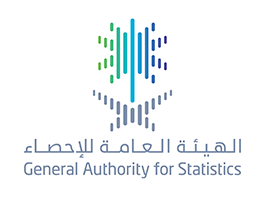
الهيئة العامة للإحصاء: انخفاض الرقم القياسي العام لأسعار المستهلك لشهر فبراير 2019م بنسبة 0.2%
GASTAT: Consumer Price Index (CPI) Decreases by 0.2% in February, 2019
On Tuesday, Rajab 12th, 1440 H (corresponding to March 19th, 2019), The General Authority for Statistics (GASTAT) released its monthly report of Saudi Arabia’s Consumer Price index (CPI) for last February. The report was published on its official website www.stats.gov.sa.
(CPI) went down 0.2% in February and reached (105.7) points compared to (105.9) points in January at the same year.
On the other hand, the report attributed the monthly decline of the index to the declines of the six sections composing it, which are: housing, water, electricity and gas section with 0.6%, home furnishing and equipment section with 0.4%, food and beverages section with 0.2%, culture and entertainment section with 0.2%, transportation section with 0.1%, and finally telecommunication section with 0.1%.
In contrast, two of the main sections witnessed an increase, which are: restaurant and hotels sections with 0.3 %, and personal goods and services section with 0.2%.
Tobacco section, clothing and shoes section, health and education sections remained stable with no change.
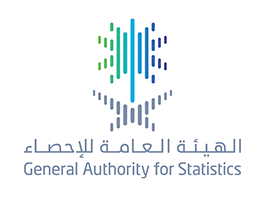
"الإحصاء" تُصدر مؤشر مساهمة المنشآت الصغيرة والمتوسطة في القطاع الخاص للربع الثالث 2018م
Small enterprises’ revenues increase by (0.9%)
“GASTAT” releases the indicator of SMEs contribution to private sector for the third quarter of 2018
On Monday 18th of Rajab 1440 H corresponding 25th of March 2019, the General Authority for Statistics (GASTAT) released the results of SMEs contribution to private sector’ indicator for the third quarter of 2018. The indicator is published on GASTAT official website www.stats.gov.sa. It measures the contribution of SMEs in the growth of the private sector, while reflecting the development of these enterprises.
The results showed an increase in the revenues of small enterprises which employ (6 to 49) workers in the private sector with a percentage of (0.9%) compared to the third quarter of last year (2017). However, the revenues of medium enterprises that employ (50 to 249) workers in the private sector registered (113,654,809) SAR in quarter 3, 2018.
The results also demonstrated an increase in the number of small enterprises workers as they recorded (1,627,482) workers in quarter 3, 2018 with a percentage of (1.8%) compared to the same quarter of 2017.
Regarding the numbers of workers in medium enterprises which employ (50 to 249) workers in the private sector, they increased to reach (917,847) workers in quarter 3, 2018 with a percentage of (2.5%) compared to quarter 3, 2017.
The results of the indicator of SMEs contribution to private sector (quarter 3, 2018) indicated a decrease by (2.4%) in the numbers of workers in micro enterprises which employ (less than 5 workers) in the private sector with (2,015,019) workers during the third quarter of 2018, compared to the third quarter of 2017.
On the other hand, the results also revealed a decrease in the revenues of micro enterprises that employ (less than 5 workers) in the private sector during the third quarter of 2018, with a percentage of (3.0%) compared to the third quarter of 2017, where they registered (171,256,482) SAR.

الهيئة العامة للإحصاء: المملكة على بُعدِ عامٍ من تعداد السعودية 2020
Tuesday Evening March 17th, 2020 is the Beginning of the Fifth Census’ Actual Enumeration
GASTAT: Saudi Arabia is One Year Away Until the Saudi Arabia Census 2020
The General Authority for Statistics (GASTAT) revealed that the fifth census of population, housing and establishments in Saudi Arabia “Saudi Arabia Census 2020” will start on Tuesday, March 17th, 2020, which is the beginning of the actual enumeration “evening of time reference”. The census will provide a broad statistical database to be used as a reliable basis when conducting studies and research required by the development programs and plans in Saudi Arabia and the Saudi Vision 2030. Furthermore, it provides statistical data and indicators to measure changes in population characteristics over time, conducts local, regional and international comparisons, and review and evaluate future population estimates.
In this Census, GASTAT will rely on different methods to ensure getting accurate information through linking data together in addition to the cooperation with the National Information Center and the Saudi Post. This is done in accordance with the preparations made by GASTAT and their partners in order to implement the “Saudi Arabia Census 2020”. This census will be different from previous censuses due to the change in the enumeration method by integrating the register-based data with field data.
The official spokesman of GASTAT , Mr. Taiseer Al-Mufrrej, said that GASTAT has completed the updating of the populated areas directory in all regions of the Kingdom, in addition to updating the postal addresses in several administrative regions, which are: Makkah, Madinah, Jazan, Najran, Al-Baha, the Northern Border, Tabuk, Hail and Al-Qassim. He also explained that during the month of Sha'ban the postal addresses in the city of Riyadh and the eastern region will be updated. He also added that the preparation of the operational plans for manpower, training, and publishing has been initiated. This is the first phase of the Saudi Arabia Census 2020, which will be followed by the second phase (the actual enumeration phase), then the third phase (data processing phase) then finally the announcement of the results.
The first official census in Saudi Arabia was conducted in 1394H. (1974), then the second was conducted in 1413H. (1992), followed by the third in 1425H.(2004). Finally, the fourth census made by the Central Department of Statistics and Information prior to the transformation into the General Authority for Statistics was conducted in 1431H. (2010). The total population in the 2010 census was (27,136,977) people.
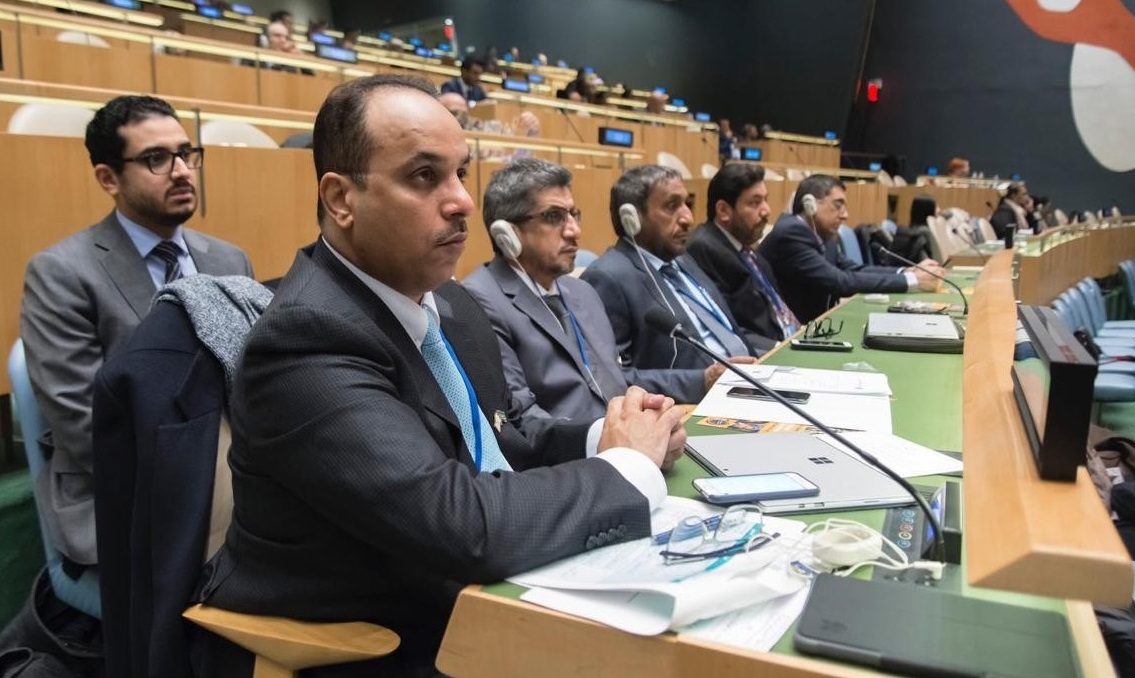
المملكة تختتم مشاركتها في أعمال الدورة الـ (50) للجنة الإحصائية للأمم المتحدة
Saudi Arabia Ends its Participation in the Works of the United Nations Statistical Commission (50th Round)
Yesterday 9, Mar 2019, Saudi Arabia Ends its Participation in the works of the United Nations Statistical Commission (50th Round). It started last Tuesday until yesterday evening at the United Nations headquarter in New York City. The delegation was headed by his Excellency Dr. Fahad bin Sulaiman Altekhaifi, president of the General Authority for Statistics. The participation was an extension of the Authority strategy for international collaboration, Altekhaifi said. Also, to benefit from the best statistical practices to be reflected on the development of the statistical sector in Saudi Arabia, he added. Moreover, Saudi Arabia has reviewed a number of development axes for the statistical sector. The works of the (50th) meeting dealt with a number of important topics related to the role of statistical data in the development process, the fundamental principles of official statistics, open data and national quality assurance frameworks, regional statistical development, discussing all the matters related to national accounts and price, international trade statistics, industrial statistics, and statistics related to disasters, in addition to education statistics.
the General Authority for Statistics of Saudi Arabia will publish a statistical report of the goals of sustainable development indicators with social, economic and environmental dimensions in time series that will ensure measuring the progress in achieving them, President of GASTST clarified. Saudi Arabia is working alongside with international organizations of the indicators to measure all the indicators correctly, he added.
The Authority participated in the Works of the United Nations Statistical Commission through a variety of themes and issues, including: educational Statistics which indicated that training and education sector in the kingdom of Saudi Arabia witnesses an increasing attention under Saudi Arabia's Vision 2030, and national transformation program which has developed many initiatives related to the development of education and training and aims to raise the quality of education and training outputs, make them relevant to the labor market and encourage creativity and innovation in scientific research as the policy-making and planning in this field requires accurate and comprehensive data to support decision makers. It has also developed register-based data of education, through conducting a household survey regularly every three years for training and education.
General Authority for Statistics will provide a quality services in order to reach the expectations and the needs. It will also provide high quality services through statistical data collection as well as analyzing, keeping and publishing the data. Also, through implementing and improving the quality system. It seeks to fully implement the National Accounts System 2008 which helped in developing many forms of economic and household surveys to assist obtaining the necessary data to apply all the accounts in accordance with the concepts of the System of National Accounts 2008, GASTAT is also working to build national accounts and economic statistics capabilities to enable them to carry out their tasks in accordance with the recommendations of international standards.
GASTAT also stressed on the importance of understanding the system of national accounts for urgent economic developments, and prepare accessories to the System which clarifies how to address these developments through theoretical framework and applied framework as well as show experiences of countries.
It is worth mentioning that Saudi Arabia has been chosen with (11) countries globally to fill the membership of the board of directors of the International Comparison Program in the United Nation of the period 2017-2019, based on the vote of the Statistics Division of the United Nation and Data Development Group of the international bank to represent the countries of Western Asia. Saudi Arabia has been chosen to this membership as appreciation to the positive role of GASTAT in various statistical programs organized by the United Nation. The formation of the administrative structure of the International Comparison Program includes: United Nation Statistical Commission, management board (GASTAT membership), the joint work teams among agencies, consulting and technical coordination committees, as well as the implementing international agency (World Bank), regional offices, the Statistical Office of the European Union (Euro stat), the Organization of Cooperation and Development, and the participating national statistical offices.
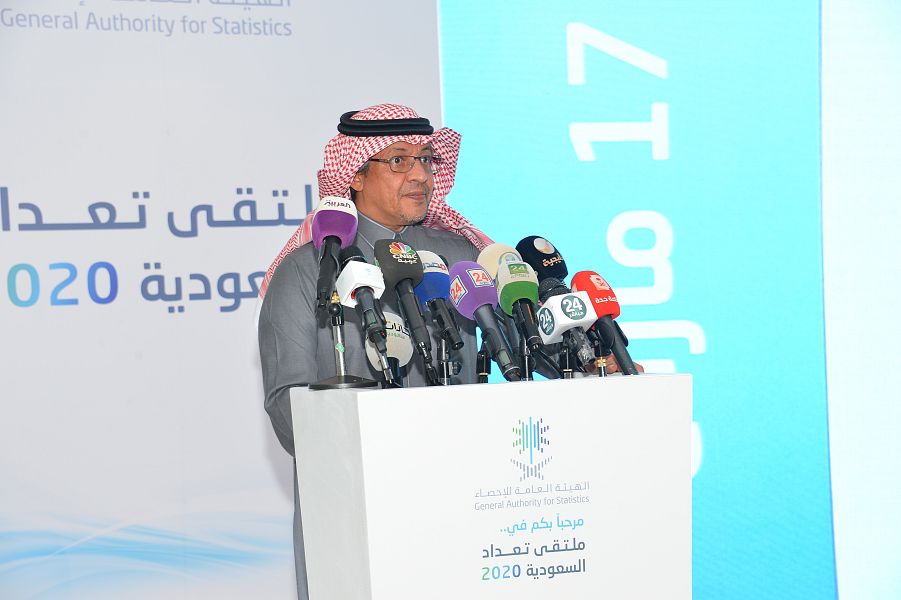
الهيئة العامة للإحصاء تعلن عن ليلة الإسناد الزمني لتعداد 2020

الهيئة العامة للإحصاء تشارك في الاجتماع الرابع لمجلس الإدارة لبرنامج المقارنات الدولية 2019م
GASTAT Participates in ICP Board of Directors Fourth Meeting (2019)
The General Authority for Statistics (GASTAT) has participated in the International Comparison Program (ICP) board of directors fourth meeting held in New York, USA, on Sunday Jumada Al-Thani 26th, 1440 H. (March 3rd, 2019). Dr Fahad Altekhaifi, the President of GASTAT, indicated that the board of directors comprises eleven state members including the Kingdom of Saudi Arabia which represents West Asia. It discussed the progress reached so far in the implementation of the ICP of 2017, the communication and dissemination strategy, the preparation for the forthcoming session in 2020 in addition to the discussion of several other topics relevant to statistical work.
Dr Altekhaifi also added that the selection of Saudi Arabia to be a member in the ICP board of directors for the years 2017-2019 comes as a recognition of GASTAT positive role in the various statistical programs organized by the United Nation. He also said that it is an affirmation of the Kingdom’s active role in the world’s statistical map, and reflects the results of the statistical sector strategic transformation in the Kingdom, which is supported by the government due to its role in supporting national development decisions. The World Bank's International Comparison Program is a global statistical partnership program based on a statistical system that is integrally connected to the economic analysis. It uses statistical methods to derive the necessary data to calculate the PPP for about 200 countries and economies worldwide. It will facilitate the use of PPP as currency converters, which will allow the comparison of the total economic indicators and the economic conditions of countries worldwide which helps to allow users to track progress towards achieving sustainable development goals and effectively guide programs towards their goals. The program is geographically divided into six regions under the supervision of the ICP office at the World Bank.
Altekhaifi confirmed that the program’s work and results will help shape policies for global comparison to support statistical products of the participating countries. It will also enable GASTAT to access the best statistics global practices to improve and develop the statistical work.
It is noteworthy to mention that the ICP board of directors is compiled of, chairpersons, directors and leading experts in 11 statistical agencies participating in the program. They are distributed according to the regional areas: Africa, Asia, Pacific Islands, Latin America, the Caribbean, West Asia, Commonwealth of Independence States, European Union, non-European Union States, members of the organization for Economic Cooperation and Development, representatives of the International Monetary Fund, World Bank, UN Statistics Division, and the Inter-Agency Coordination Group.
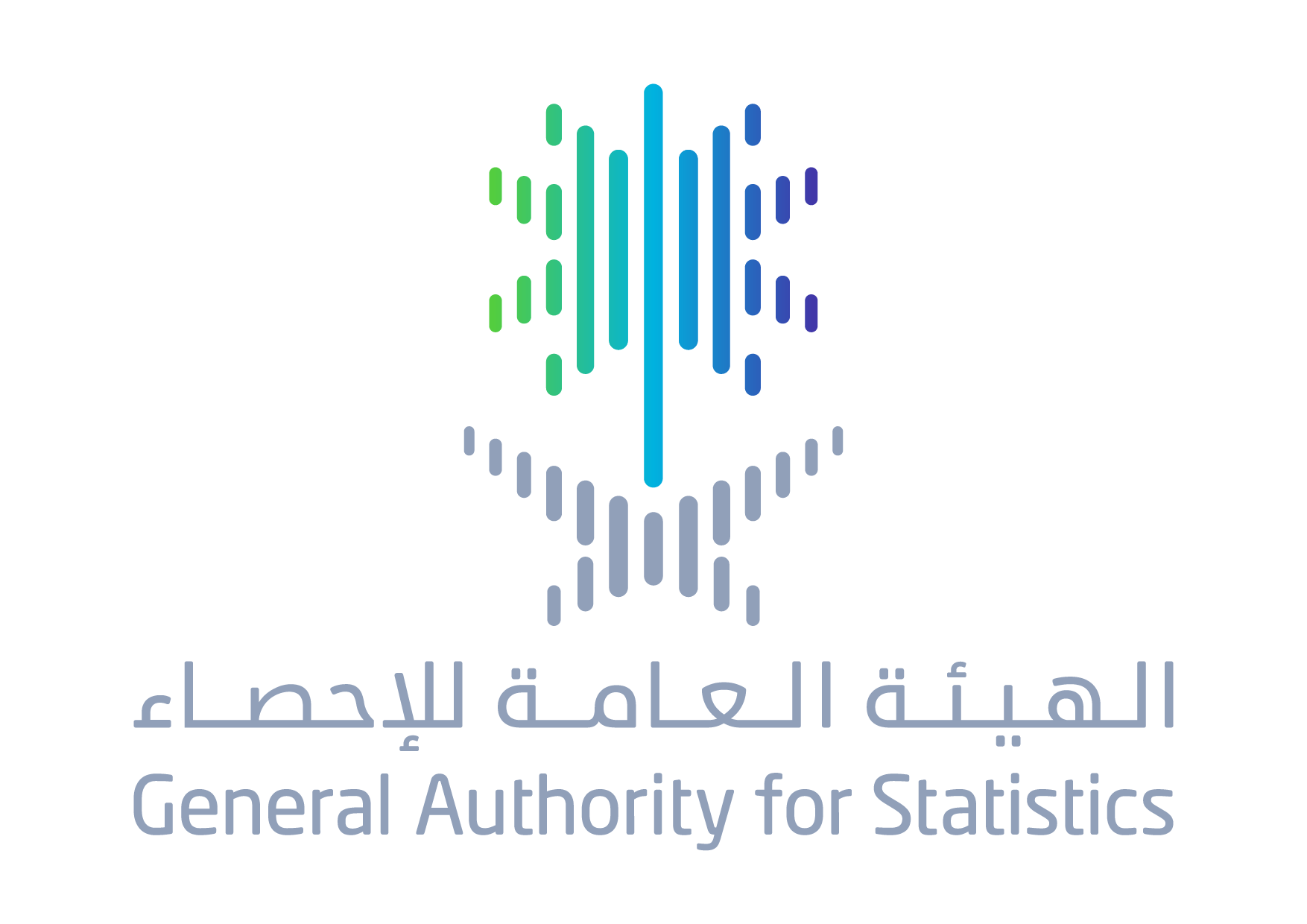
الهيئة العامة للإحصاء: (17.40%) من السكان يمارسون الرياضة لأكثر من 150 دقيقة في الأسبوع
According to Households Sport Practice Survey in Saudi Arabia
GASTAT: (17, 40%) of population are practicing sports for more than 150 minutes on a weekly basis
GASTAT has released today the results of Households Sports Practice Survey, 2018. Households Sports Practice is one of the Saudi Vision 2030 requirements. In addition, this kind of practice includes indicators that are targeted by 2030.The data of survey allows conducting many developmental studies and plans in general, and in the sports field in particular. These studies and plans should support the development of many programs and initiatives that do increase the rate of Households Sports Practice. The survey methodology and form considered international standards and recommendations issued by ILO.
According to the survey results, the percentage of individuals (15 years and over) who are engaged in sports activities for more than 150 minutes weekly reached (17, 40%) compared to (82,60%) of individuals who do not practice sport. Saudi males and females practicing sport activities for 150 minutes or more per week hit (13.08%) of the total population of the Saudi Arabia for those aged 15 years and over. The percentage of Saudi males was (10.14%) while it hit (2.94%) for Saudi females. On the other hand, the percentage of non-Saudi males and females practicing sports activities for the same category was (4.32%).
The results of the survey showed that the percentage of individuals practicing walking activity was (56.05%) of the total number of sports participants. Walking is the most practiced activity by individuals in Saudi Arabia, followed by football activity where it reached (25.69%) out of total number of sport participants. In addition, the percentage of individuals who are engaged in bodybuilding activity reached (5.80%) out of total sport participants, running activity on the other hand hit (2.72%) out of total sport participants. Swimming activity is the least practiced sport activity by individuals according to the survey results where it reached (2.34%) out of total sport participants. (8.46%) represent the percentage of other types of sport practiced by individuals out of total sport participants.
The survey results revealed that the reasons of not practicing sports among Saudi population
varied. Some individuals have no desire to practice sport with a percentage of (44.73%), followed by those who do not have the time to practice sport with (29.74%) out of total number of individuals who do not practice sport. Those who didn’t have accessible facilities inside the district
which reached (13.09%) out of total number of individuals who do not practice sport. Additionally, individuals who cannot practice sport due to injury or disability reached (10.83%) out of total number of individuals who do not practice sport. Finally, individuals who cannot practice sport due to other reasons reached (1.64%) out of the total number.
Field survey of Household Sport Practice aim to provide recent statistical data and indicators about the extent of sport practice for households as well as identifying the reasons behind not practicing sports according to the kind of relationship with the household head. The classification was by gender, nationality, educational status, age and marital status. The survey also provides data about the percentages of sport practice by households at the administrative regions level.
GASTAT: Saudi Unemployment Rate Falls in Q3 of 2018
GASTAT Releases Labor Market Bulletin for Q3 of 2018
GASTAT: Saudi Unemployment Rate Falls in Q3 of 2018
General Authority for Statistics (GASTAT) has released Labor Market Bulletin for Q3 of 2018. It has been published on GASTAT's official website www.stats.gov.sa, in accordance with surveys of labor force conducted by the Authority on a quarterly basis, together with data of labor market, based on administrative records of relevant entities. Such entities include: Ministry of Labor and Social Development, Ministry of Civil Service, General Organization for Social Insurance, Human Resources Development Fund, and National Information Center.
The economic participation rate of total population (15 years and above) has risen by (56.4%)for Q3, compared to (56.2%) for Q2. During the same period, the economic participation rate for total Saudis, at (42.0%), and for Saudi males (15 years and above) at (63.5%), has not changed in Q3. However, the economic participation rate of Saudi females (15 years and above) has increased to (19.7%), compared to (19.6%)in the previous quarter, results showed.
According to the survey's data, unemployment rate of total Saudis (15 years and above) has fallen to (12.8%), compared to Q2(12.9%). Moreover, unemployment rate of total population (15 years and above) has stabilized at (6.0%) in Q3 of 2018. Concerning genders unemployment rate, it has decreased for both sexes, reaching (30.9%), compared to (31.1%) in Q2 for (Saudi females), in addition to (7.5%), compared to (7.6%) in Q2 for (Saudi males).
The total number of workers, according to administrative records of Saudi Arabia, has witnessed a decline in 2018 by (12,688,042) persons for Q3, compared to (13,018,066) persons for Q2, with a decrease of (330,024) persons. Regarding Saudis, the number of workers, based on administrative records, has edged down to (15,356) persons, reaching (3,109,987) persons, compared to (3,125,343) persons for Q3 and Q2, respectively, the report noted.
For non- Saudis, the number of male workers, based on administrative records of Saudi Arabia for 2018, has fallen to (8,622,890) persons in Q3, compared to Q2 (8,927,862) persons, with a decrease of (304,972) persons. Additionally, the number of female workers has dropped by (9,696) persons, reaching (955,165) persons in Q3, compared to (964,861) persons in Q2, according to the results.
Based on the bulletin's results, data of Ministry of Civil Service (Jdarah and Saed programs), and data of Human Resources Development Fund (Hafiz and Taqat programs), the total number of Saudi job seekers, according to Saudi Arabia's administrative records, has decreased by (195,297) persons, recording in Q3 (923,504) persons, compared to (1,118,801) persons in Q2.
It is worth mentioning that job seekers have been defined by GASTAT as: Saudi individuals (males or females) enrolled in job search programs of Ministry of Civil Service (Jdarah or Saed), and Human Resources Development Fund (Hafiz). Further, they register their personal data, qualifications, occupational experiences, and CVs through an electronic system. It is important to keep in mind that job seekers are not subject, in administrative records, to the internationally recognized standards and conditions of unemployment approved by the ILO; therefore, they are not considered to be unemployed. Hence, not every job seeker is considered unemployed, s/he may be looking for work, and is working in another job at the same time. This also applies in situations of self - employed workers, who are looking for government entities job, and are not registered as workers in government records (Civil Service, Social Insurance, commercial records, and municipal licenses). For example, self-employed persons who do not work inside establishments.
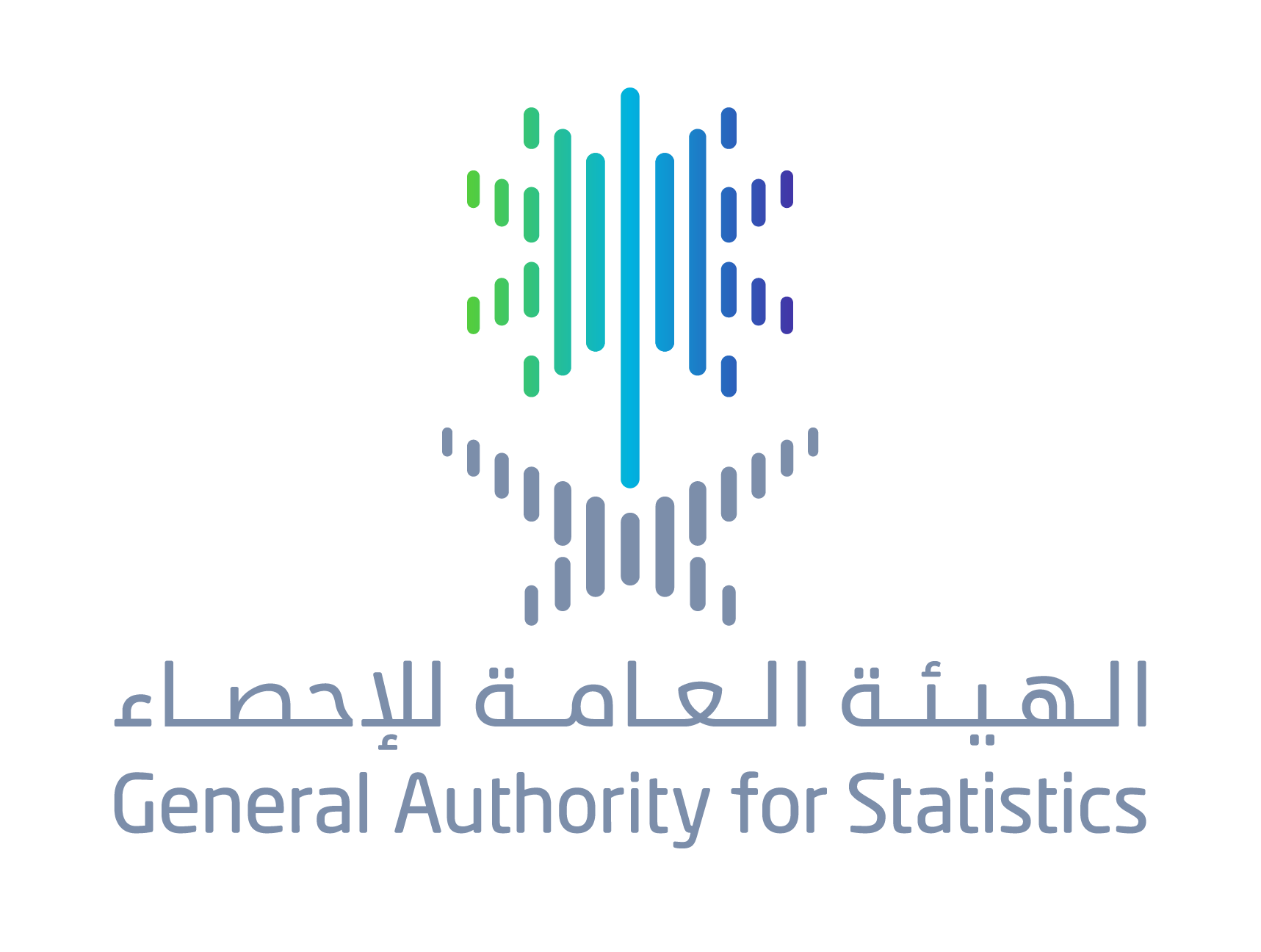
الهيئة العامة للإحصاء: استقرار الرقم القياسي لأسعار الجملة لشهر ديسمبر 2018م
General Authority for Statistics (GASTAT): Stability in Wholesale Price Index, December 2018
On Wednesday, the 17th of Jumada al-Awwal 1440H corresponding January 23, 2019, The General Authority for Statistics (GASTAT) released its monthly indicator for Wholesale Price Index (December 2018) on its official website www.stats.gov.sa.
The wholesale price index stabilized at (116.9) in December 2018, and did not record any change compared to the previous month (November 2018).
The indicator includes five sections, which are: agriculture and fishery products section, ores and minerals section, food and beverages products, tobacco and textiles section, mineral products, machines and equipment section and other goods.
Today’s report attributed the index’s stability of the wholesale prices of December to the changes of the five sections composing the index, where two of them have increased; which are: mineral products, machines and equipment section (0.5%) and other goods (0.1%).
In turn, three sections went down, which are: agriculture and fishery products section (1.4%), food, beverages, tobacco and textiles (0.4%), raw materials and metals (0.1%).
Wholesale price index in Saudi Arabia measures average changes in goods prices and services sold in primary markets taking into consideration that the change is only in price, so consequently, all changes resulting from variation in qualities or discount in quantities or variation in method of shipping and other influential factors are excluded to get only net price after excluding all the mentioned indicators. This number is for everyone and it is prepared based on Saudi Arabia
Additionally, wholesale price index is used to monitor changes in the prices of local or imported goods, which are dealt with in the market, consequently to identify price trends and market conditions. The wholesale price index is an important tool to prepare national accounts, by saving income and national accounts from the impact of price change.
GASTAT Releases Housing Bulletin to Describe Households’ Dwellings Until the Mid of 2018
“Owned dwellings” increases, rented dwellings decreases with the growth of households numbers
GASTAT Releases Housing Bulletin to Describe Households’ Dwellings Until the Mid of 2018
On Saturday 20th of Jmadah AL-Awal 1440 (January 26th ,2019), GASTAT released Housing Bulletin on its official website www.stats.gov.sa which combines the results of the field survey that was held between 17/7/1439 and 22/8/1439 corresponding to (14/4/2018 to 18/5/2018) as well as record-based data provided by Ministry of Housing related to housing support . The bulletin aims at providing data of dwellings occupied with Saudi households (owned, rented, employer-provided housing) at Saudi Arabia’s administrative level. Additionally, the bulletin studies the characteristics of the dwelling and its surrounding environment, creates a database for dwellings, meets the local and international requirements as well as the needs of researchers and planners related to dwellings characteristics that are required by developmental plans. The bulletin also provides periodical data and indicators to measure the change in dwellings over time as well as conducting international, regional and local comparisons. Finally, it measures the improvements and the growth of the housing fields according to the type and age of the dwelling occupied by the household.
On the other hand, Housing Bulletin showed that the number of Saudi households increased to (3.591.098) until the mid of 2018. For the same period, the results showed that the number of owned dwellings occupied with Saudi households increased (3.43%) compared to the same period of 2017 where owned dwellings occupied with Saudi households and used all construction materials reached (60.49%). Moreover, owned dwellings excluding dwellings that were built with “non-reinforced” construction materials reached (51.70%) compared to (41.91%) in the middle of 2017. The percentage of rented dwellings occupied with Saudi households decreased by (37.63%) in the middle of 2018 compared to (38%) in the middle of 2017. However, these percentages do not reflect the percentage of individuals who owned dwellings but the type of dwelling (owned, rented, employer-provided housing) that may be occupied by one household or more.
In addition, the bulletin showed that the number of dwellings occupied with Saudi households in Saudi Arabia increased (2.46%) in the middle of 2018 compared to the middle of 2017. Dwellings occupied with Saudi households (owned, rented, employer-provided housing) until the mid of 2018 reached (64.2%) out of total dwellings in Saudi Arabia where the highest percentage was recorded in Makkah with (24.96%) followed by Riyadh with (23.68%), then in the Eastern Region with (14.31%), Asir (8.55%), Madina (6.92%), Jazan (4.93%), AL-Qassim (4.64%), Tabuk (3.37%), Hail (2.22%), Najran (1.90%), AL-Baha (1.88%), AL-Jouf (1.60%), finally, Northern Boarders (1.04%).
In regard to the materials used in dwellings construction and occupied with Saudi households (owned, rented, employer-provided housing), the results showed that reinforced construction increased by (4.31%) compared to the mid of 2017. Dwellings occupied with Saudi households (owned, rented, employer-provided housing) and were built with (bricks) decreased by (9.2%) in the mid of 2018 compared to the mid of 2017 where dwellings occupied with Saudi households and were built with reinforced construction reached (89.54%) and dwellings occupied with Saudi households and were built with (bricks) reached (10.44%).
The results also showed that the majority of dwellings (99.85%) occupied with Saudi households (owned, rented, employer-provided housing) depend on a public network as main source for electricity and are occupied with (99.86%) out of total Saudi households’ individuals.
GASTAT confirmed that the results of the Housing Survey indicate the status of Saudi households’ dwellings until the mid of 2018. On the other hand, the record-based data of the Ministry of Housing showed the number of beneficiaries of the subsidized housing provided by “Sakani” program reached (67.070) Saudi households at the administrative level during 2018.
General Authority for Statistics (GASTAT) Released Real Estate Price Index Q4, 2018
General Authority for Statistics (GASTAT) Released Real Estate Price Index Q4, 2018
On Thursday, 18th of Jumada al-Awwal 1440H corresponding to January 24, 2019, General Authority for Statistics(GASTAT) released the report of Real Estate Price Index, Q4 2018 on its official website www.stats.gov.sa .
The real-estate price index has recorded a decline by (2.3%) compared to the previous quarter (Q3, 2018), where the indicator of the Real Estate Price index reached (80.4) in the fourth quarter of 2018 compared to (82.3) in (Q3, 2018). This decline can be attributed to the decrease in the main sectors composing it: housing sector (2.6%), commercial sector (1.7%), and agricultural sector (0.1%) compared to the third quarter of the current year.
In fact, the housing sector witnessed an increase in the residential houses by (0.5%) during the 4th quarter of 2018 compared to the previous quarter. On the other hand, residential lands decreased by (0.6%) as well as villas (1.7%), residential buildings (0.6%), apartments (0.2%), commercial plots (0.7%) compared to the previous quarter. Commercial centers have also decreased by (0.2%) and the agricultural sector recorded a decline by (0.1%).
It is worth mentioning that real estate price index is based on record-based data available at the Ministry of Justice. This indicator is an important tool to support economic and statistical decision makers regarding the changes of property prices and future forecasts during different periods of time. Real estate price index includes three main sectors consisting of several categories of real estate: housing sector which includes the following (plot of land, building, villa, apartment and house), commercial sector includes (plot of land, building, exhibition/ commercial center and shop), and the agricultural sector with only one category which is the agricultural land.
The real estate price index aims at finding accurate real estate statistical indicators that measure the real estate market in Saudi Arabia according to internationally recognized scientific principles and standards. It also aims at filling the data gaps related to the real estate field and is considered as an important tool to support economic decision makers in this field.
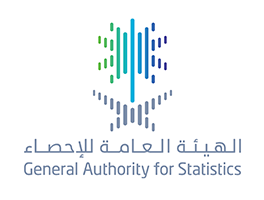
الهيئة العامة للإحصاء : انخفاض الرقم القياسي العام لأسعار المستهلك لشهــــر ديسمبر 2018م بنسبة 0.3 %
GASTAT: Consumer Price Index (CPI) Decreases by 0.3% in December, 2018
On Tuesday, Jumada al-Awwal 16th, 1440 H (corresponding to January 22th, 2019), The General Authority for Statistics (GASTAT) released its monthly report of Saudi Arabia’s Consumer Price index (CPI) for December. The report was published on its official website www.stats.gov.sa.
(CPI) went down 0.3% in December compared to the previous month (November 2018).
(CPI) in Saudi Arabia decreased to (106.2) index points in December from (106.5) points in November of 2018 with 0.3% change, report showed.
The report attributed the monthly decline of the index to the declines in six of the main sections of the consumer price index, which are: food and beverage by 0.5%, housing, water, electricity, gas and other fuel by 0.5%, transport by 0.2%, home furnishing and equipment by 0.1%, communications by 0.1% and finally miscellaneous goods and services by 0.1%.
Tobacco, clothes, footwear, health, culture and entertainment, education, restaurants and hotels remained stable with no change.
On the other hand, annual change of the general CPI increased 22.2% compared to the same month last year reaching (106.2) points in December 2018 compared to (103.9) points in December 2017 with 2.2% change.
The ten sections composing the CPI contributed to the annual change, which are: transportation 12.0%, tobacco 10.2%, restaurant and hotels 7.3%, food and beverages 7.1%, home furnishing and equipment 5.0%, entertainment and culture 4.6%, health 4.0%, telecommunication 1.1%, personal goods and services 0.8% and education 0.2%.
On the other hand, two of the main sections witnessed a decline, which are: housing, water, electricity and gas section and with 5.1% as well as clothing and footwear with 3.2%.
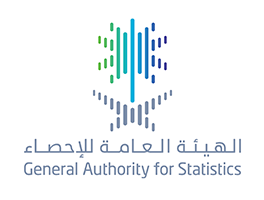
انخفاض معدل البطالة لإجمالي السكان (سعوديون وغير سعوديين) ليصل 6%، واستقرار معدل بطالة السعوديين عند (12.9%)
GASTAT Releases Labour Market Bulletin Q2, 2018
(Saudi and Non-Saudi) Unemployment Rate Drops to 6%, and Stabilizes at 12.9% for Saudi Citizens
On Thursday 9th of Safar corresponding to October 18, 2018, GASTAT releases the Labour Market Bulletin for the 2nd quarter of 2018 on its official website (www.stats.gov.sa); the bulletin is based on the estimates of the Labour Market Survey that is conducted by GASTAT on a quarterly basis as well as the administrative records available at the related entities (Ministry of Labour and Social Development, Ministry of Civil Affairs, General Organization for Social Insurance, Human Resources Development Fund, and National Information Center).
The Bulletin’s results showed a decrease in the number of total employees in the 2nd quarter based on the administrative records available in Saudi Arabia where the number reached (13.018.066) individuals compared to (13.333.513) individuals in the previous quarter; about (315.447) individuals from the previous quarter. The number of Saudi employees based on the administrative records edged down by (25.066) individuals where it reached (3.125.343) individuals compared to (3.150.409) individuals in the previous quarter. On the other hand, the number of Saudi male employees decreased by (14.787) individuals and the number of Saudi female employees edged down by (10.279) individuals.
According to the estimates of 2nd quarter 2018 survey, the economic participation rate of total population (15 years and above) rose to (56.2%) compared to (55.5%) in the previous quarter. Saudi economic participation increased by (42.0%) compared to (41.9%) in the previous quarter. Saudi male economic participation rate stabilized at (63.5%); on contrary, Saudi female economic participation edged up to (19.6%) compared to (19.5%) in the previous quarter.
Furthermore, the data of the Labour Market Bulletin Q2,2018 showed a stability in the unemployment rate for total Saudis (15 years and above) based on the survey’s estimates compared to the previous quarter where it reached (12.9%). On the other hand, the results also showed a decrease in the unemployment rate for the total population where it reached (6.0%) compared to (6.1%) in the first quarter of 2018; a decrease of (0.1%). In contrast, the unemployment rate of Saudi females edged up to (31.1%) compared to (30.9%) in the previous quarter; however, the unemployment rate of Saudi males stabilized at (7.6%).
The number of Saudi jobseekers for the 2nd quarter of 2018 rose to (1.118.801) individuals based on the administrative records available in Saudi Arabia compared to (1.072.162) individuals in the previous quarter; with an increase of (46.639) individuals most of them are bachelor holders (42.894) individuals. On the other hand, the number of Saudi female jobseekers reached (34.238) jobseekers. It is worth mentioning that the criteria of measuring the number of jobseekers will be updated in the coming Labour Market Bulletin (Q3,2018) and that is based on a study that was conducted for job applicants through (Jadarh, Sa’ed, Taqat) by distributing a survey to job applicants in order to update their data.
GASTAT has defined jobseekers as Saudi individuals (males and females) registered in job seeking programs of the Ministry of Civil Affairs (Jadarh and Sa’ed) as well as Human Resources Development Fund (Hafez) where they entered their personal data, qualifications, experiences, and CVs electronically.
In fact, jobseekers included in the administrative records are not subjected to the internationally recognized criteria and conditions of the International Labor Organization (ILO); hence, not all of them are considered unemployed individuals. Therefore, not every jobseeker is an unemployed individual; they may be look for a work while still working in another job, as in the case of jobseekers in the government sector where they work for their own business and not registered as employees in the governmental administrative records (Civil Affairs, Social Insurance, commercial registers, and municipal licenses) such as those who work for their own business outside the establishments.
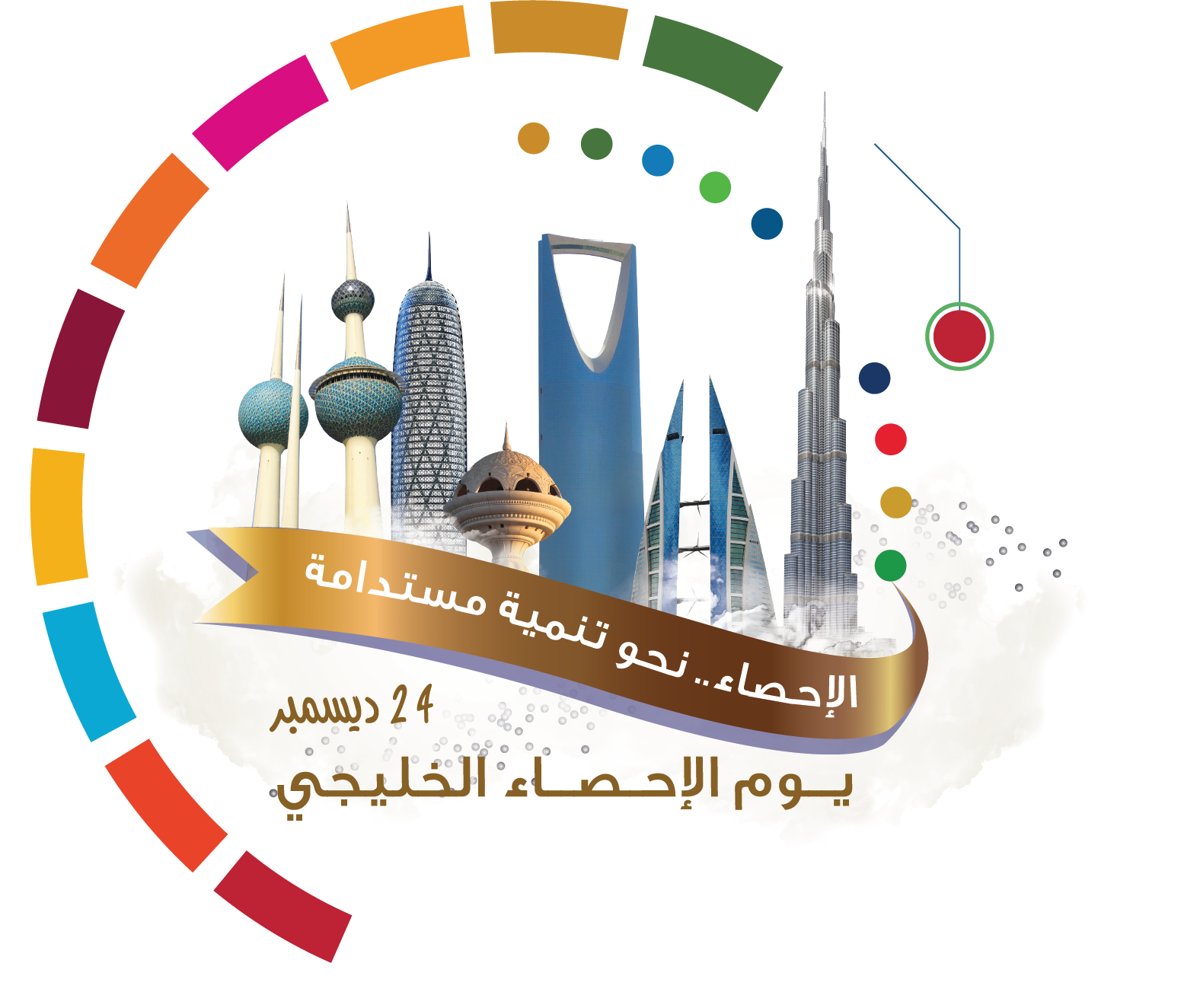
الهيئة العامة للإحصاء تصدر دليل التعريفات والمفاهيم والمصطلحات الإحصائية
Coinciding with the Gulf Statistics Day
GASTAT Releases the Manual of Statistical Definitions, Concepts and Terms
The General Authority for Statistics (GASTAT) will participate in the events of the gulf statistical day which occurs on December 24th of each year. The slogan of this year is “Statistics Towards Sustainable Development”. It emphasizes the role of the statistical centers and authorities of the Gulf Cooperation Council (GCC) countries in the sustainable development industry through providing accurate data of statistical indicators. The aim of the Gulf Statistics day is to highlight the achievements and challenges of the statistical work in the region, raise awareness of the importance and role of statistics in the social and economic development of GCC countries, emphasize the importance of the society cooperation with statisticians, highlight the importance that GCC countries attach to statistical work.
GASTAT official spokesman, Mr. Taiseer Almofarrej, explained that coinciding with this occasion, GASTAT releases the Manual of Statistical Definitions, Concepts and terms used in GASTAT. The manual includes more than 1200 definitions. It is a rich scientific work presenting the key terms and concepts of the statistical products issued by GASTAT to facilitate handling these products.
This guide is based on the standardization of definitions, concepts and statistical terminology used in the GCC countries. GASTAT updated and added some new concepts in order to contribute in enhancing transparency in statistical work, as well as to raise awareness to all producers and users of statistical data, information and indicators.
Mr. Almofarrej added that the manual covers the concepts and terms used in the field of statistics including, terms related to the general population and housing census, agricultural census and its concepts, population and vital statistics, government services statistics, geographic statistics, National concepts accounts statistics concepts, foreign trade, prices statistics, business and industry statistics and other statistical terms and concepts used in GASTAT.
It is worth mentioning that GASTAT is keen to enhance and enrich the statistical arabic content, provide statistical linguistic culture to interested individuals and specialists and disseminate vital statistical information and indicators about Saudi Arabia.
You can view the Manual of Statistical Definitions, Concepts and Terms on this link:
https://www.stats.gov.sa/ar/992
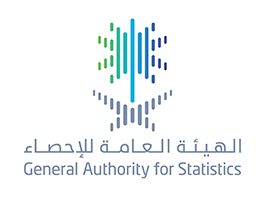
"الإحصاء" تُصدر نتائج مسح (البيئة الاقتصادية الصناعية) لعام 2017م
“GASTAT’’ Releases Results of (Industrial Economic Environment) Survey 2017
GASTAT released the results of Industrial Economic Environment Survey 2017 which was published on its official website www.stats.gov.sa. The survey includes results related to the amount of consumed water in (industrial economic establishments) with its different sources as well as wastes produced due to economic industrial activities and ways of disposal. The results also include types of energy used in industrial economic establishments.
97% of industrial economic establishments purchase the water they consume. The amount of purchased water consumed in these establishments reached (978 million cubic meter) in 2017. On the other hand, results showed that wastes resulted from activities of (industrial economic establishments) reached (20.2) tons, as follows: solid chemical wastes are the largest among them with 36% followed by liquid chemical wastes with 12%, then ferrous metal wastes with 10%, lastly, non-ferrous metal wastes with 6% .
The most used energy in industrial economic establishments during 2017 were natural gas (66%), diesel (18.7%), and gasoline 91 (10.3%), results showed.
In addition, types of energy used in industrial economic establishments include natural gas (66%), diesel (18.7%), gasoline 91 (10.3%), cooking gas (2.2%), crude oil (1.9%), and gasoline 95 (0.7%).
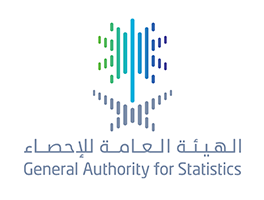
الهيئة العامة للإحصاء: خلال شهر نوفمبر 2018م: انخفاض المؤشر الشهري للرقم القياسي لأسعار المستهلك وارتفاع المؤشر السنوي.
GASTAT: Consumer Price Index (CPI) Decreases and Annual Index Rises in November 2018
General Authority for Statistics (GASTAT) released its monthly report of Saudi Arabia's Consumer Price Index (CPI) for November. The report was published on its official website www.stats.gov.sa . (CPI) went down to 0.2% in November compared to the previous month (October 2018).
(CPI) in Saudi Arabia decreased to (106.5) index points in November from (106.8) in October of 2018 with 0.2% change, (GASTAT) report showed.
On the other hand, the report attributed the monthly decrease of the index to the declines of the five main sections composing it, which are: housing, water, electricity and gas section with 0.8%, restaurants and hotels sections with 0.2%, food and beverages sections with 0.1%, clothing and footwear sections with 0.1%, and finally telecommunication section with 0.1%.
In contrast, two of the main sections witnessed an increase, which are: home furnishing and equipment section, and transportation section with 0.2%. Tobacco, health, culture and entertainment, education, and personal goods and services sections remained unchanged.
The year-over-year (YOY) of CPI registered an increase of 2.4% in November 2018 compared to the same month last year reaching (106.5) in November 2018 compared to (103.6) in November 2017 with 2.8%.
This increase was ascribed to the ten sections composing the CPI, which are: transportation 12.0%, tobacco 10.2%, restaurants and hotels 8.6%, food and beverages 7.7%, home furnishing and equipment 4.6%, health 4.0%, culture and entertainment 3.8%, telecommunication 1.3%, personal goods and services 0.6%, and finally education 0.2%,
On the other hand, two of the main sections witnessed a decline, which are: clothing and footwear section as well as housing, water, electricity and gas section by 4.5% and 3.1% respectively.

مجلس إدارة (سيسرك) يعقد اجتماعه الحادي والأربعين
With the participation of GASTAT
(SESRIC) board of directors holds its 41st meeting
As a representative of Saudi Arabia, the General Authority for Statistics (GASTAT) participated in the 41st meeting of the Board of Directors of the Statistical, Economic and Social Research and Training Center for Islamic Countries (SESRIC) on 18th December 2018 in Ankara city.
Saudi Arabia is a board member of the Statistical, Economic and Social Research and Training Center for Islamic Countries (SESRIC), which includes nine member states, seven of which are elected for 3- year period.
Saudi Arabia participation reflects the positive role of GASTAT in the different statistical programs. It also shows the progress achieved by Saudi Arabia in the statistical field, which highlights the effective role of Saudi Arabia in the international statistics map. In addition, it reflects the results of the statistical sector’ strategic transformation in Saudi Arabia, which the country always supports as it has a crucial role in making national development decisions.
The vice president of GASTAT, Mr. Abdullah Albatil said that this meeting discussed all the center works conducted in 2018 in many activities and events such as providing statistical data and information about the member states, facilitating the cooperation projects and statistical integration plans between the member states, enriching the center’s statistical database and expand its coverage, being up-to –date with all digital developments in the field of statistical publication and presentation, in addition to strengthening and enhancing the performance of the national statistics system in all member states in order to produce high-quality national statistics, for the purpose of supporting and assisting decision and policy makers, and enhancing the technical capabilities of the national statistics offices in the member states.
Albatil added that many studies and research about the challenges facing all member states have been prepared. Furthermore, two reports have been published about the services trade and the e-government services as a part of the Islamic Cooperation Organization related reports.
Regarding the technical training and cooperation, GASTAT vice president stated that technical cooperation has been enhanced between all member states. Moreover, many programs have been launched and implemented to strengthen their capabilities within a number of social and economic fields. The efforts of these states have been also supported to enhance the potentials of their human resources and national institutions by exchanging experts, holding workshops, and making study visits.
Albatil also said that the 41st SESRIC board of directors’ meeting shed light on all completed activates that GASTAT participated in such as attending a meeting with the representatives of the national statistics offices of ICO member states in the United States of America last March, which was held as part of the events of the 49th session of the United Nations Statistical Committee in New York.
As for the activities of the member states ‘statistical capacity building, Albatil mentioned that the results of a statistics course titled (Analyzing data in Saudi Arabia) have been reviewed, along with the results of many study visits to some member states including: a study visit to Brunei about (labor statistics), a study visit to Malaysia about (Population and migration statistics), a study visit to Indonesia about (Education statistics), a study visit to Egypt about (Income and consumption statistics), and other visits to benefit from the most outstanding statistical experiences.
GASTAT vice president confirmed that the project of peer review of the national statistical offices of the ICO member states was established and that there is a memorandum of understanding between GASTAT and (SESRIC), within the project implementation in collaboration with SESRIC.
It is worth noting that SISREC is the most important statistical institution at the level of Islamic countries. It provides various services in the field of capacity building and the exchange of statistical expertise, and exerts efforts to strengthen relations of mutual cooperation and exchange visits between member states. It also prepares lists of all experts and technicians in order to develop mechanisms of the visits between those experts according to the needs of the states, in a way that serves the building of their statistical capacities.

د. فهد التخيفي: الميزانية تعتمد " التخطيط المدروس " عنوانًا جديدًا للتنمية
Congratulating the Custodian of the Two Holy Mosques and his crown prince on announcing the largest budget in the history of Saudi Arabia
Dr.Fahad AL-Tukhaifi: the budget adopts an “organized planning’’ as a new approach for development
On his behalf and on behalf of all GASTAT’s employees as well as all the statistical sectors in Saudi Arabia, president of GASTAT, Dr.Fahad Bin Sulaiman AL-Tukhaifi congratulates the Custodian of the Two Holy Mosques King Salman Bin Abdulaziz and his crown prince HRH Prince Mohmmad Bin Salman Bin Abdulaziz on announcing the budget of 1440/1441 H as the largest expenditure budget in the history of Saudi Arabia. Moreover, it reflects the directions of the wise leadership in the country that helped to reduce the budget’s deficit by (4.2%) of GDP.
AL-Tukhaifi confirmed that the budget proves that organized planning is the adopted approach used for development in Saudi Arabia at the present time and for the future as well. In addition, numbers that were included in the budget were achieved by organized planning, remarkable procedures, and a clear vision and aim. He added that the speech of the Custodian of the Two Holy Mosques during the budget’s announcement emphasized the ongoing support to boost the economic growth in Saudi Arabia, enhance the expenditure’s quality, and to attain financial sustainability and balance. Moreover, this can be reached by accomplishing Saudi Arabia’s 2030 vision objectives through increasing the size of the national economy and keeping its growth. Also, by heading towards economic reform, financial management and control, enhancing transparency and enabling the private sector. The custodian of the Two Holy Mosques directs all officials to quickly start the implementation of the budget which reflects his constant concern that all government entities will be able to meet citizens’ expectations and moving from only providing services to surpassing in providing these services.
Dr. AL-Tukhaifi said:” the Custodian of the Two Holy Mosques concludes his words by affirming that the comprehensive development will continue and will cover all regions of Saudi Arabia and that is his main concern; this shows the commitment of the leadership that the development covers all the regions of Saudi Arabia and in all fields as well’’. On the other hand, GASTAT’s president confirmed that the parts included in the budget will guarantee an effective contribution to enhance the government expenditure, also to enhance the quality, accuracy and transparency of financial accounts. Therefore, financial efficiency level will increase and benefit of projects will be maximized and that will be reflected on what is obtained by the citizen from the outputs of these projects. May God protect this country and keep its safety and prosperity, he concluded.
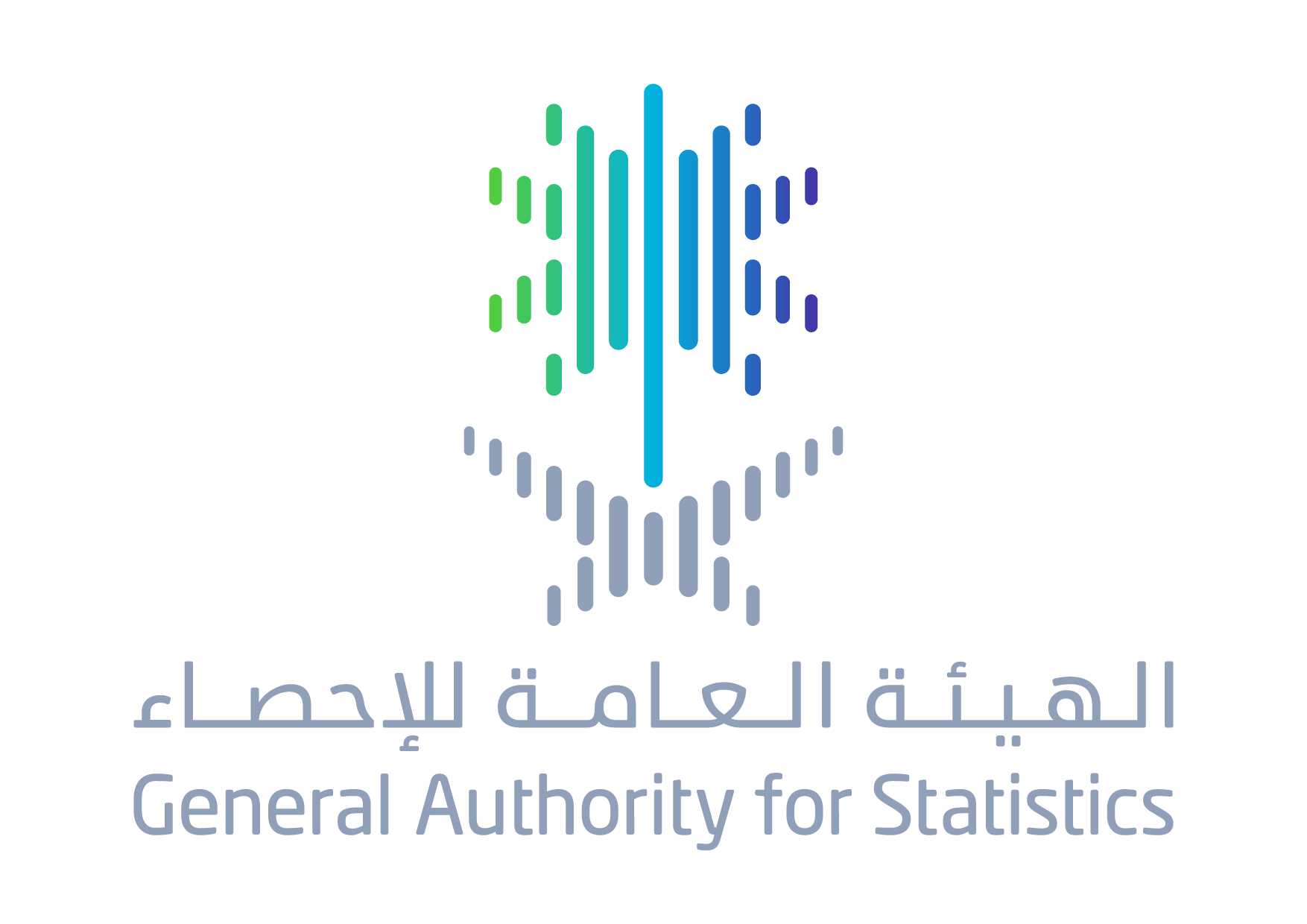
"الهيئة العامة للإحصاء " تصدر لأول مرة نتائج مسح النشاط الصناعي لعام 2017م
GASTAT Releases for the First Time Industrial Activity Survey's Results-2017
On Thursday, Rabi al-Thany 6th,1440 H (corresponding to December 13th ,2018), the General Authority for Statistics (GASTAT) released the results of the " Industrial Activity Survey for 2017" to support the national development. This Survey was carried out for the first time by GASTAT and is considered outputs of the statistical transformation in Saudi Arabia which have been started since the beginning of the last year. The Authority has released so far more than sixty-five statistical products including economic, social, demographic, and Umrah statistics. In addition to other statistics related to labor market, energy, knowledge, environment, culture, sport, entertainment, security and safety. The Industrial Activity Survey is an annual survey based on field data collected by visiting establishments all over Saudi Arabia's regions. The results of the Survey include more than nineteen statistical indicators related to the features and components of private and public sectors establishments. The Survey concerns the activities of mining, quarrying, manufacturing, electricity, gas, and steam supply, air conditioning, water supply, sanitation, in addition to waste management and process. The results also provide detailed and accurate data to meet the needs of the relevant parties in line with the international recommendations specialized in industrial activity surveys.
The Authority appreciated the role of all the relevant governmental and private entities that contributed to the design of the survey's form, and submitted their proposals according to the needs of data and information for the economic sector generally and industrial sector particularly. This is done through mutual team works and continuous workshops in order to ensure that the statistical product outputs have met all the requirements.
The results of the Industrial Activity Survey showed that the number of industrial establishments made up (112,785) one hundred twelve thousand, seven hundred eighty-five establishments, with 31% of Saudi workers.
According to the results, the operating expenses of the industrial establishments exceeded about (484.712 million) four hundred eighty-four billion, seven hundred twelve million SAR, whereas the value of the operating revenues of the industrial establishments reached in 2017 around (1,516,844,817,326) one trillion, five hundred sixteen billion, eight hundred forty-four million, eight hundred seventeen thousand, three hundred twenty-six SAR. The percentage of Saudi workers working at the following establishments: crude oil and natural gas, other manufacturing, as well as coke and refined petroleum products reached 84%, 80% and78% respectively out of the total number of Saudi workers in the industrial establishment, the results showed.
It is worth mentioning that GASTAT releases, in addition to the survey of industrial activity, a number of products related to the industry sector. Such as, index of industrial production survey which measures the relative change and any developments in the quantities of material and commodities production. Additionally, environment economic survey (industry) that reflects the norms of water and energy consumption in Saudi Arabia by the establishments and wastes resulting from these activities and potential ecological effects.
The Industrial Activity Survey is the third statistical product published by the Authority in the field of industry. It aims to provide comprehensive industrial statistics in different regions of Saudi Arabia, for instance: statistics and compensations of industry workers as well as operating and transfer expenses. In addition to the size, revenues value, and contribution to GDP of industrial production.
GASTAT has published the Survey's results, field research forms and others results on its official website www.stats.gov.sa . The products are in various information formats, so researchers, scholars and decision-makers can benefit from them and conduct data analysis.
